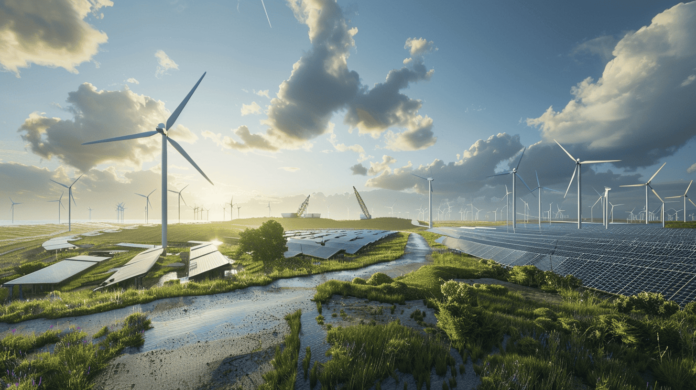Renewable sources have become the Netherlands’ primary contributor to electricity production, accounting for 53% of the total in the first half of 2024, according to a new report by the national statistics institute CBS. Wind energy saw a 34% increase, mainly from offshore wind farms, while solar power grew despite less sunshine. This shift towards renewables has led to a decline in fossil fuel-based electricity generation, with coal-fired production dropping by nearly 40%.
Wind power’s growth
In the first six months of 2024, the country produced 32.3 billion kWh of electricity from renewable sources. Wind energy played a crucial role in this shift. Production from wind turbines increased by 34%, reaching 17.4 billion kWh. Offshore wind farms, particularly Hollandse Kust Zuid and Hollandse Kust Noord, contributed significantly to this growth. In 2023, wind capacity in the Netherlands grew by 2.0 GW, with 1.4 GW being offshore installations.
Solar power defies weather conditions
Despite experiencing less sunshine than usual, solar energy production also saw an increase. Solar electricity generation rose to 11.7 billion kWh, an uptick of 0.8 billion kWh compared to the previous year. This growth is attributed to the installation of more solar panels, which compensated for the reduced solar radiation. The expansion of solar power underscores the adaptability and resilience of renewable energy technologies.

How to make the best out of your solar panels
Uncertain rules, feed-in tariffs, and unclear contract clauses might make you wonder if installing solar panels on your rooftop was a good idea after all.
Decline in fossil fuel usage
The rise in renewable energy production has led to a significant reduction in the use of fossil fuels. Coal-fired electricity generation fell by nearly 40%, producing only 3.9 billion kWh. Similarly, electricity production from natural gas decreased to 21.3 billion kWh. The shift away from fossil fuels is driven by the increased availability of cheaper renewable energy sources and the government’s commitment to reducing carbon emissions.
Biomass and other renewable sources
Electricity production from biomass, however, saw a decline. In the first half of 2024, biomass electricity generation dropped by 16% due to reduced co-firing in coal power plants. Despite this decline, biomass remains a component of the renewable energy mix, contributing 3.01 billion kWh. The overall reduction in biomass usage highlights the growing dominance of wind and solar power in the renewable energy sector.

Dutch renewable energy production surges, reaching new highs
In 2023, several European countries broke their previous renewable energy records amid reduced Russian gas supplies, causing a prominent shift to other power sources.
Increasing electricity consumption
While renewable energy production has surged, electricity consumption in the Netherlands also increased. In the first half of 2024, consumption rose by 5% to 55.8 billion kWh. Despite this rise, consumption levels remain slightly below pre-COVID-19 levels. The increase in consumption alongside the growth in renewable energy production signifies a dynamic energy landscape, with sustainability at its core.
National and EU renewable energy goals
The Netherlands’ progress is aligned with broader European Union goals. Earlier this year, the EU announced that over half of its electricity production came from renewable sources. The Dutch government aims to further increase the share of renewables, targeting 70% of electricity production from sustainable sources by 2030.



